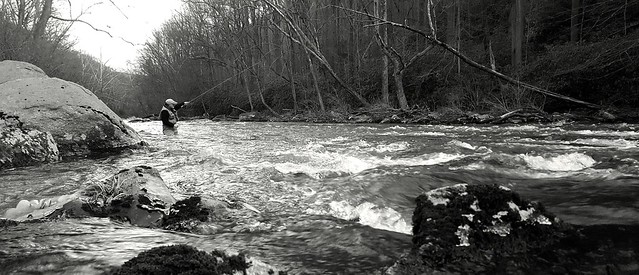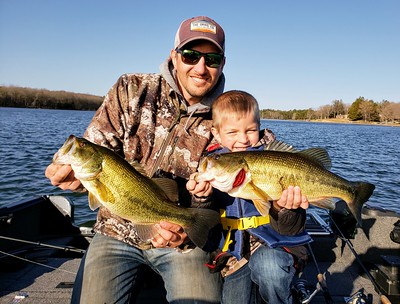Located in Garrett County

Use the Public Angler Access Map to get more information on this site.
Useful Links
 Fish Species Managed:
Fish Species Managed:
(Brown Trout, Brook Trout, Rainbow Trout) The lower Savage River tailwater is managed for wild brown and native brook trout, although rainbow trout will occasionally migrate into the river from nearby fisheries. The fishery is sustained entirely by natural reproduction and no trout are stocked in the lower Savage River.
 Summary of Most Recent Survey Results
Summary of Most Recent Survey Results
Special Fishing Regulations:
The entire lower Savage River tailwater is managed under Trophy Trout Regulations with a year-round open season, two-trout daily creel and a 12-inch minimum size limit for brook trout, an 18-inch minimum size limit for brown trout, and no minimum size for rainbow trout. Trout Stocking Updates are available on the trout stocking webpage. Anglers fishing the Lower Savage River can find two specific management zones;
- Fly Fishing Only Trophy Trout Management Area is located from the Savage River Reservoir downstream 1.25 miles to the Allegany Suspension Bridge.
- Artificial Lures or Flies Trophy Trout Management Area begins at the Allegany Suspension Bridge and ends at the mouth of the river, approximately 2.75 miles downstream. Anglers fishing this section should be aware that treble hooks are prohibited and the use of a single hook is required.
Visit the online Public Angler Access tool for a map of the special regulation areas on the lower Savage River.
Boating/Access Restrictions:
Public fishing access can be found intermittently along much of the river and designated parking areas are marked with Fishing and Boating Service regulation signs. Anglers should be aware that there is private property where angling is not permitted and to be mindful of posted signs and/or blue paint marking the private property.
The lower Savage River is a popular destination for whitewater enthusiasts during high water releases, although under flows appropriate for fishing, boating with a raft or drift boat would be nearly impossible. Wade fishing is the best way to access the river. Flows can vary so please check the gauge website (see link above), call 410-962-7687 or check the release schedule (nab-wc.usace.army.mil/nab/northBranch.html) before your fishing trip. Flows between 50 and 100 CFS are considered good fishing flows.

Physical/Habitat Description:
The Lower Savage River lies within a steep valley, surrounded by forested hillsides of hardwoods and hemlocks with thick stands of rhododendron and mountain azaleas. This moderate to steep gradient river consists of mostly cobble and boulder habitat that can prove to be tricky for wading anglers. A wading staff and studded boots are strongly recommended.
Given the generally wide/steep nature of the river, a variety of fish holding habitats are available. Deep pools, pocket water, and beautiful riffle/run areas can be found throughout the entire tailwater providing anglers with an abundance of excellent trout habitat to fish, no matter their presentation.
History:
The tailwater section of the Savage River came into existence with the completion of the Savage River Reservoir Dam in 1952. After the discovery of a naturally reproducing brook trout population, new water release guidelines were implemented in order to provide year-round conditions for trout survival. In 1987, fishery management diverged from Put and Take stocking of hatchery rainbow trout to wild trout management in a portion of the river. Wild trout management was so successful that stocking ceased in 1991 and the entire 4 miles of the tailwater was managed as a wild trophy trout fishery. Today the quality of the wild trout fishery is truly extraordinary and is certainly one of Maryland’s premier wild trout resources.
 Contact Us - Comments and questions regarding fishing in the tailwater section of the Savage River can be directed to:
Contact Us - Comments and questions regarding fishing in the tailwater section of the Savage River can be directed to:
Maryland Department of Natural Resources
Fishing and Boating Services
1728 King's Run Road Oakland, Maryland 21550
301-334-8218 or
[email protected]